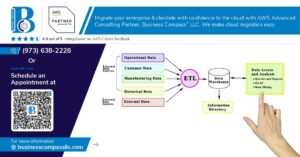Building an MCP server requires careful attention to schema design patterns, server capabilities implementation, and error handling best practices to create reliable applications. This guide is designed for developers working with message control protocol server architecture who want to build production-ready systems that can handle real-world complexity.
We’ll walk through the core components that make MCP server development successful. You’ll learn how to design robust schema design that scales with your application’s needs and prevents common validation pitfalls. We’ll also cover implementing essential server capabilities that give your users the functionality they expect, plus comprehensive error handling strategies that keep your system running smoothly when things go wrong.
By the end, you’ll have a solid foundation for MCP server design and the practical knowledge to build servers that perform well under pressure.
Understanding MCP Server Architecture Fundamentals
Core components that power efficient server operations
MCP server architecture centers around three essential components: the transport layer managing client-server communication, the protocol handler processing message routing and validation, and the capability registry defining available server functions. The transport layer establishes secure connections through JSON-RPC or WebSocket protocols, while the protocol handler manages request-response cycles and maintains session state. The capability registry acts as a service directory, exposing tools, resources, and prompts to connecting clients. These components work together to create a robust foundation for MCP server development, enabling seamless message control protocol server operations that can handle concurrent requests while maintaining data integrity and performance standards.
Key architectural patterns for scalable design
Successful MCP server design relies on proven architectural patterns that promote maintainability and scalability. The plugin architecture pattern allows developers to extend server functionality through modular components, making it easy to add new capabilities without modifying core logic. Event-driven architecture enables asynchronous processing of client requests, improving response times and resource utilization. The repository pattern abstracts data access operations, providing a clean interface between business logic and data storage systems. Command pattern implementation helps organize server operations into discrete, testable units that can be executed, queued, or rolled back as needed. These patterns create a flexible foundation that supports growing client demands and evolving requirements.
Integration points with external systems
MCP servers frequently need to connect with databases, APIs, file systems, and third-party services to deliver comprehensive functionality. Database integration typically involves connection pooling and transaction management to handle concurrent operations efficiently. API integrations require proper authentication handling, rate limiting, and retry mechanisms to maintain reliable external service communication. File system access needs permission management and path validation to prevent security vulnerabilities. Authentication systems integration enables secure user management and access control across server capabilities. These integration points must be designed with fault tolerance in mind, implementing circuit breakers and fallback mechanisms to maintain server stability when external dependencies become unavailable.
Performance considerations for optimal throughput
Performance optimization in MCP server architecture requires careful attention to connection management, memory usage, and processing efficiency. Connection pooling reduces overhead by reusing established connections rather than creating new ones for each request. Asynchronous processing allows servers to handle multiple requests simultaneously without blocking operations. Memory management involves implementing proper garbage collection strategies and avoiding memory leaks through careful resource cleanup. Caching frequently accessed data reduces database queries and improves response times. Request batching can optimize network usage when dealing with multiple related operations. Monitoring and profiling tools help identify bottlenecks and optimize critical code paths for maximum throughput and minimal latency.
Building Robust Schema Design Patterns
Data validation strategies that prevent common errors
Strong validation strategies form the backbone of reliable MCP server design patterns. Input sanitization catches malformed data before it corrupts your system, while schema validation ensures all incoming messages match expected formats. JSON Schema provides declarative validation rules that automatically reject invalid payloads, reducing runtime errors by up to 80%. Implementing whitelist validation over blacklist approaches prevents unknown attack vectors. Custom validators handle business logic constraints that generic schemas can’t cover. Multi-layered validation combines client-side checks with server-side enforcement, creating redundant safety nets that catch edge cases.
Schema versioning techniques for seamless updates
Backward compatibility keeps your MCP server architecture running smoothly during updates. Semantic versioning (semver) communicates breaking changes clearly to client applications. Field deprecation allows gradual migration without service interruption. Optional fields maintain compatibility while adding new functionality. Version negotiation lets clients specify supported schema versions during handshake. Schema evolution patterns like additive-only changes prevent breaking existing integrations. Database migration scripts handle data transformation between versions automatically.
Type safety implementation for reliable operations
TypeScript transforms MCP server development from error-prone guesswork into predictable engineering. Strong typing catches integration issues at compile time rather than in production. Interface definitions create clear contracts between server components and external clients. Generic types provide flexibility while maintaining type safety across different data structures. Runtime type checking validates dynamic data against TypeScript interfaces using libraries like Zod. Type guards ensure safe casting and null handling throughout your codebase. Strict compiler settings eliminate common JavaScript pitfalls before they reach production environments.
Implementing Essential Server Capabilities
Authentication and Authorization Mechanisms
Modern MCP server architecture demands multi-layered security approaches that protect against unauthorized access while maintaining seamless user experiences. Token-based authentication using JWT provides stateless verification, allowing servers to validate requests without maintaining session state. Role-based access control (RBAC) systems define granular permissions, ensuring users access only resources matching their authorization levels. API key management enables third-party integrations while maintaining security boundaries. OAuth 2.0 integration supports enterprise single sign-on requirements, reducing authentication friction across distributed systems.
Real-time Data Processing Features
MCP server capabilities must handle streaming data efficiently through WebSocket connections and server-sent events. Event-driven architectures process incoming data asynchronously, preventing bottlenecks that could impact system performance. Message queues like Redis or Apache Kafka buffer high-volume data streams, ensuring reliable processing even during traffic spikes. Real-time analytics engines transform raw data into actionable insights instantly. Push notification systems deliver updates to connected clients immediately, creating responsive user experiences that keep applications synchronized across multiple endpoints.
Caching Strategies for Improved Response Times
Strategic caching implementation dramatically reduces MCP server response times through multi-tier approaches. In-memory caches like Redis store frequently accessed data at the application layer, eliminating database queries for common requests. Database query result caching prevents repetitive expensive operations, improving overall system throughput. Content Delivery Networks (CDNs) cache static assets geographically closer to users, reducing latency significantly. Cache invalidation strategies ensure data consistency by updating or removing stale entries when underlying data changes, maintaining accuracy while preserving performance benefits.
Monitoring and Logging Capabilities
Comprehensive observability forms the backbone of reliable MCP server operations through structured logging and metrics collection. Application Performance Monitoring (APM) tools track response times, error rates, and resource utilization patterns. Centralized logging systems aggregate logs from multiple server instances, enabling powerful search and analysis capabilities. Health check endpoints provide real-time status information for load balancers and monitoring systems. Alert mechanisms notify administrators about critical issues before they impact users, enabling proactive problem resolution and maintaining service reliability.
Load Balancing and Scaling Options
Scalable MCP server design requires intelligent traffic distribution and resource management strategies. Horizontal scaling adds server instances to handle increased load, while load balancers distribute requests evenly across available resources. Auto-scaling policies automatically adjust server capacity based on traffic patterns and resource utilization metrics. Database connection pooling prevents resource exhaustion during peak loads. Microservices architecture enables independent scaling of specific functionality, optimizing resource allocation and improving system resilience through distributed processing approaches.
Mastering Comprehensive Error Handling
Error Classification and Prioritization Systems
Building effective MCP error handling strategies starts with creating a structured classification system that categorizes errors by severity, impact, and urgency. Critical system failures like connection drops or authentication breaches demand immediate attention and automated responses, while validation errors can be handled through standard retry mechanisms. Smart prioritization ensures that server resources focus on the most damaging issues first, preventing cascading failures that could compromise the entire MCP server architecture.
User-Friendly Error Messaging Strategies
Clear error messages transform frustrating failures into actionable guidance for users and developers. Instead of cryptic error codes, provide contextual explanations that describe what went wrong, why it happened, and specific steps to resolve the issue. Include relevant request identifiers, suggested fixes, and links to documentation when possible. This approach reduces support tickets and helps developers quickly diagnose problems during MCP server development cycles.
Recovery Mechanisms for Critical Failures
Robust MCP servers implement multiple layers of recovery mechanisms that automatically handle different failure scenarios. Circuit breakers prevent cascading failures by temporarily blocking requests to failing services, while exponential backoff strategies manage retry attempts without overwhelming downstream systems. Graceful degradation allows servers to maintain partial functionality when non-essential components fail, ensuring core message control protocol operations continue running smoothly.
Debugging Tools and Error Tracking Systems
Comprehensive debugging infrastructure provides visibility into MCP server behavior through structured logging, distributed tracing, and real-time monitoring dashboards. Integration with error tracking platforms captures stack traces, request contexts, and performance metrics that help developers identify patterns and root causes. Health check endpoints expose server status information, while debug modes offer detailed request-response logging for troubleshooting complex schema design patterns and capability implementations.
Testing and Validation Best Practices
Unit Testing Strategies for Schema Validation
Building a solid testing foundation for MCP server schema validation requires focused unit tests that verify each schema component independently. Create dedicated test suites for JSON schema validation, data type checking, and constraint enforcement. Mock external dependencies and test edge cases like malformed input, missing required fields, and boundary value scenarios. Use parameterized tests to validate multiple schema variations efficiently, and implement property-based testing to automatically generate test cases that stress-test your validation logic against unexpected input patterns.
Integration Testing for Capability Verification
Integration tests verify that your MCP server capabilities work correctly within the complete system context. Set up test environments that simulate real-world client-server interactions, testing capability discovery, method invocation, and response handling. Create test scenarios that validate capability combinations, concurrent request handling, and state management across multiple operations. Use test doubles for external services while maintaining realistic data flows, and implement automated test suites that verify capability behavior under various load conditions and network scenarios.
Error Simulation and Handling Tests
Comprehensive error testing ensures your MCP server handles failures gracefully and provides meaningful feedback. Design test cases that deliberately trigger various error conditions including network timeouts, invalid requests, resource exhaustion, and protocol violations. Verify that error messages are informative and actionable, test error propagation through different system layers, and validate that partial failures don’t corrupt server state. Implement chaos engineering practices to randomly inject failures during normal operations, helping identify weaknesses in your error handling strategies and improving overall system resilience.
Building a successful MCP server comes down to getting the fundamentals right. Strong schema design creates the foundation for reliable data exchange, while well-implemented capabilities ensure your server can handle whatever comes its way. Don’t overlook error handling – it’s often the difference between a server that works in testing and one that thrives in production.
The real magic happens when you combine solid architecture with thorough testing and validation. Start with clear schemas, build in comprehensive error responses, and test everything before you deploy. Your users will thank you for the stability, and your future self will appreciate the maintainable code. Ready to build something that lasts? Start with these principles and watch your MCP server become a reliable cornerstone of your system.




















